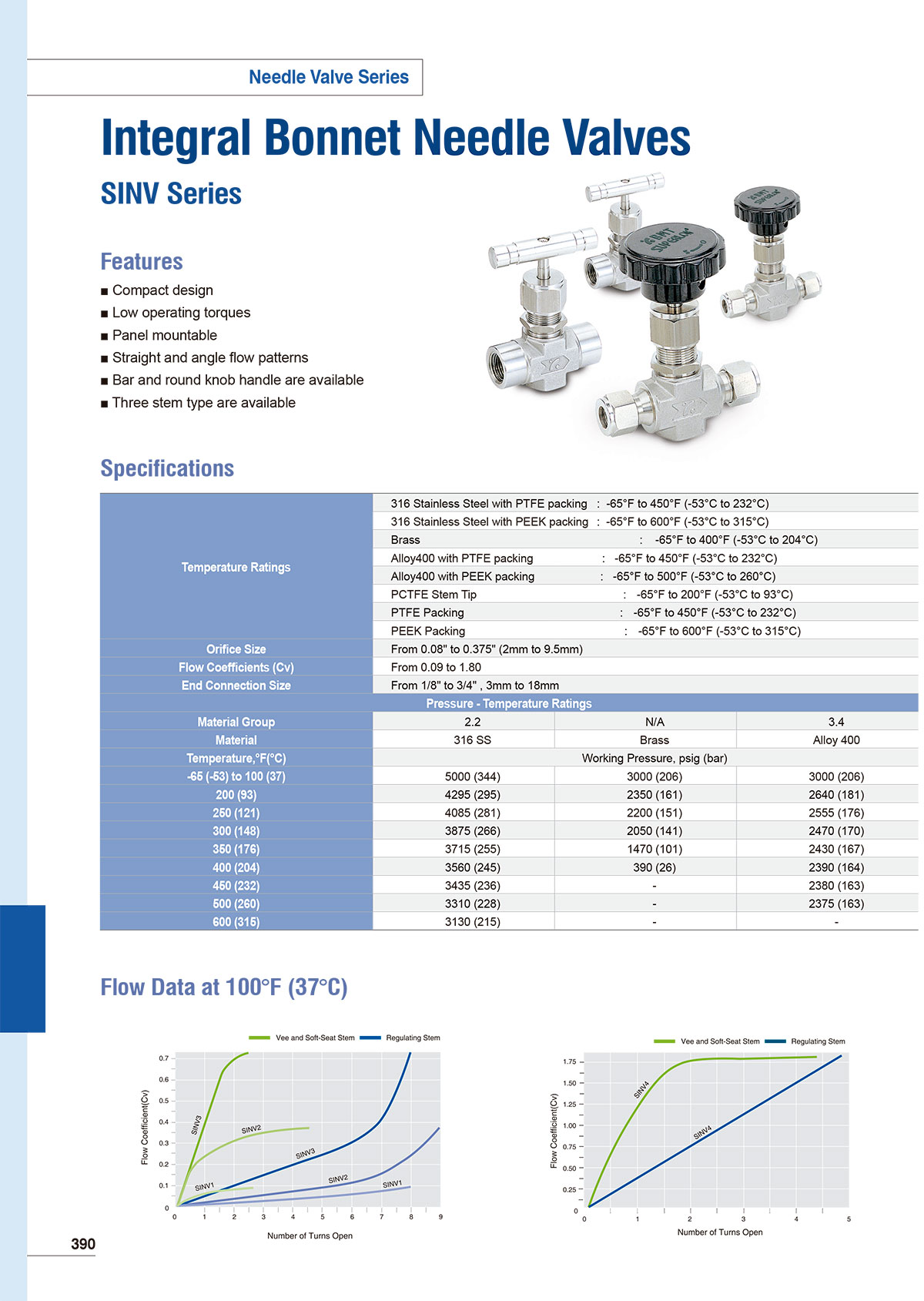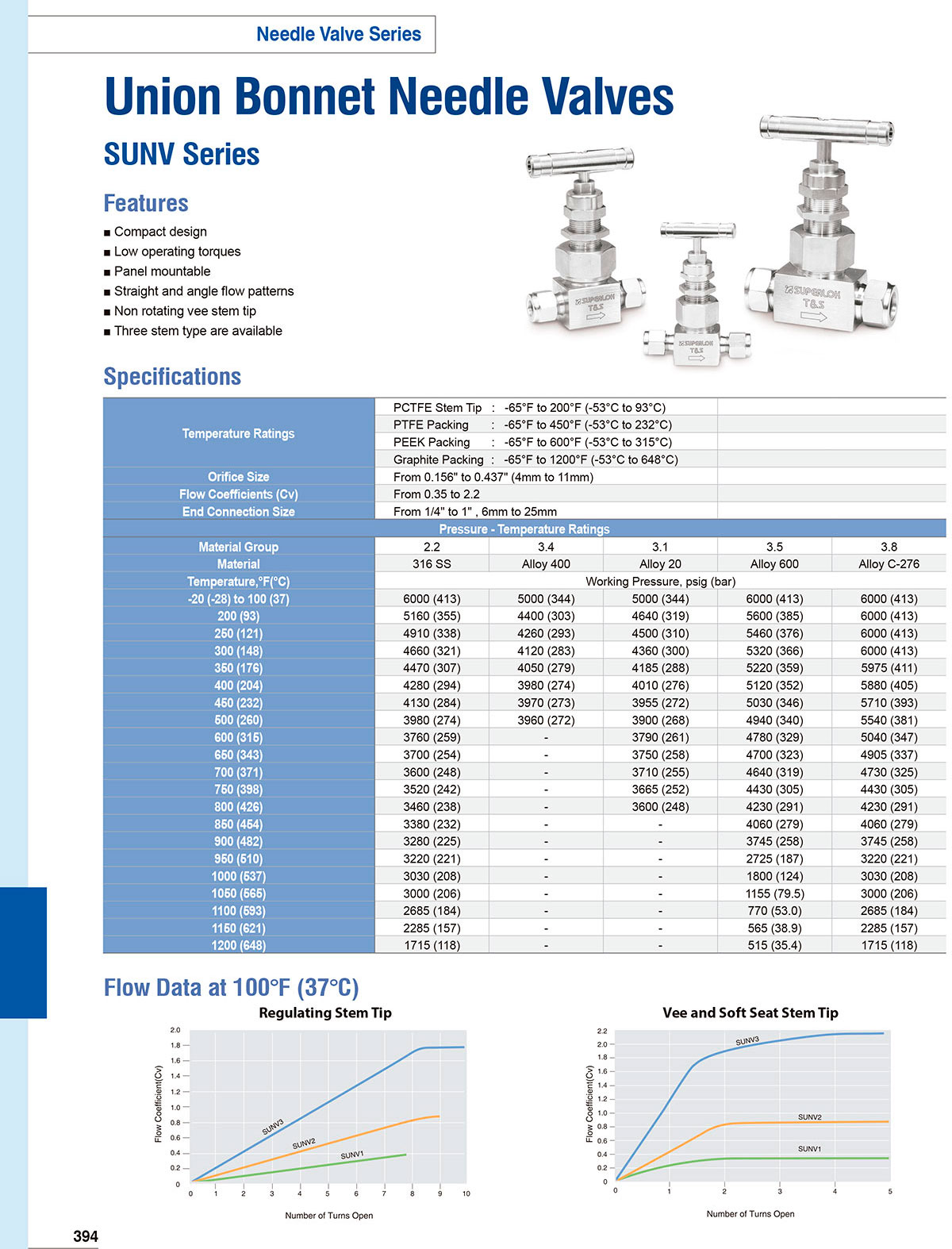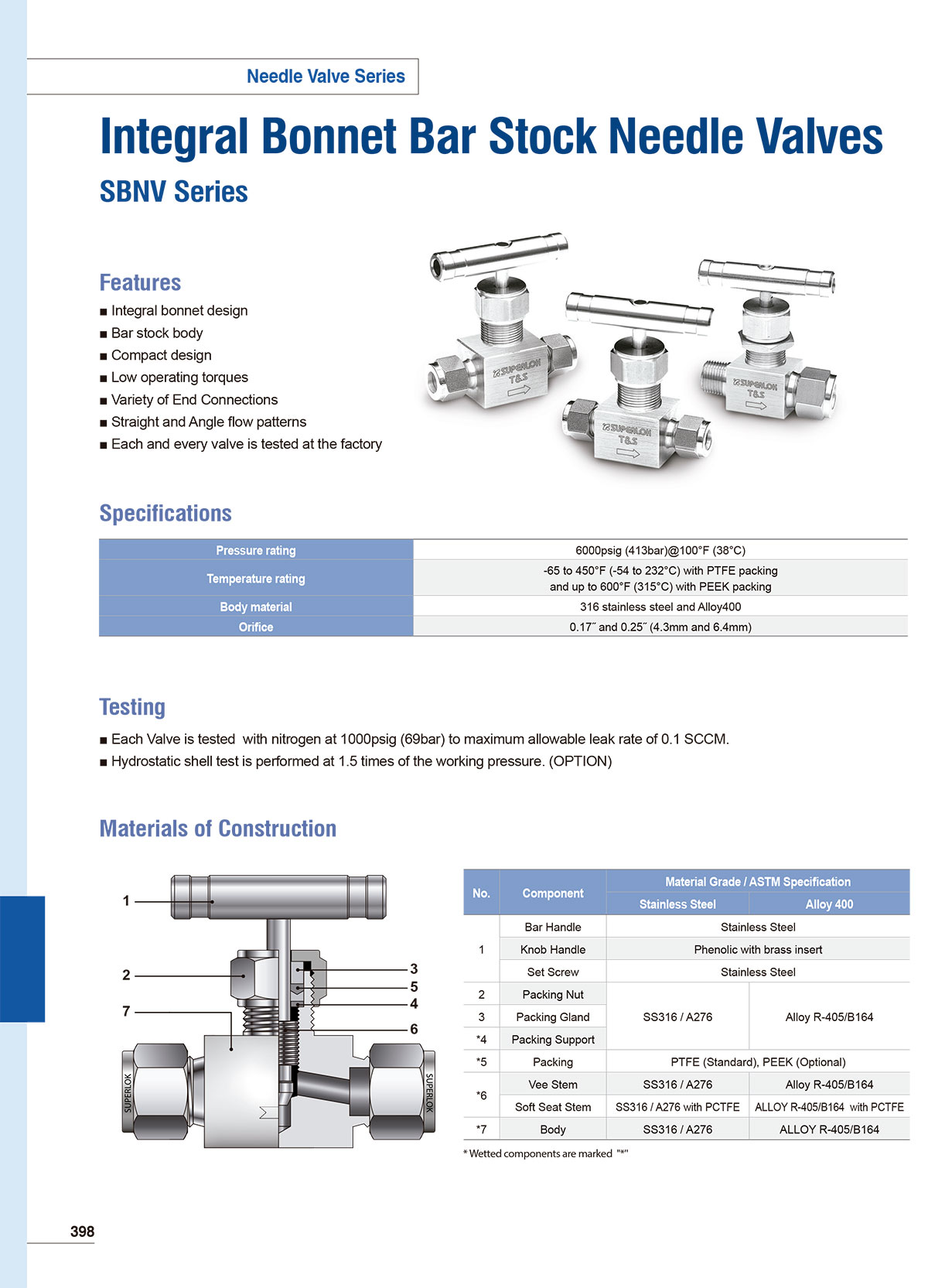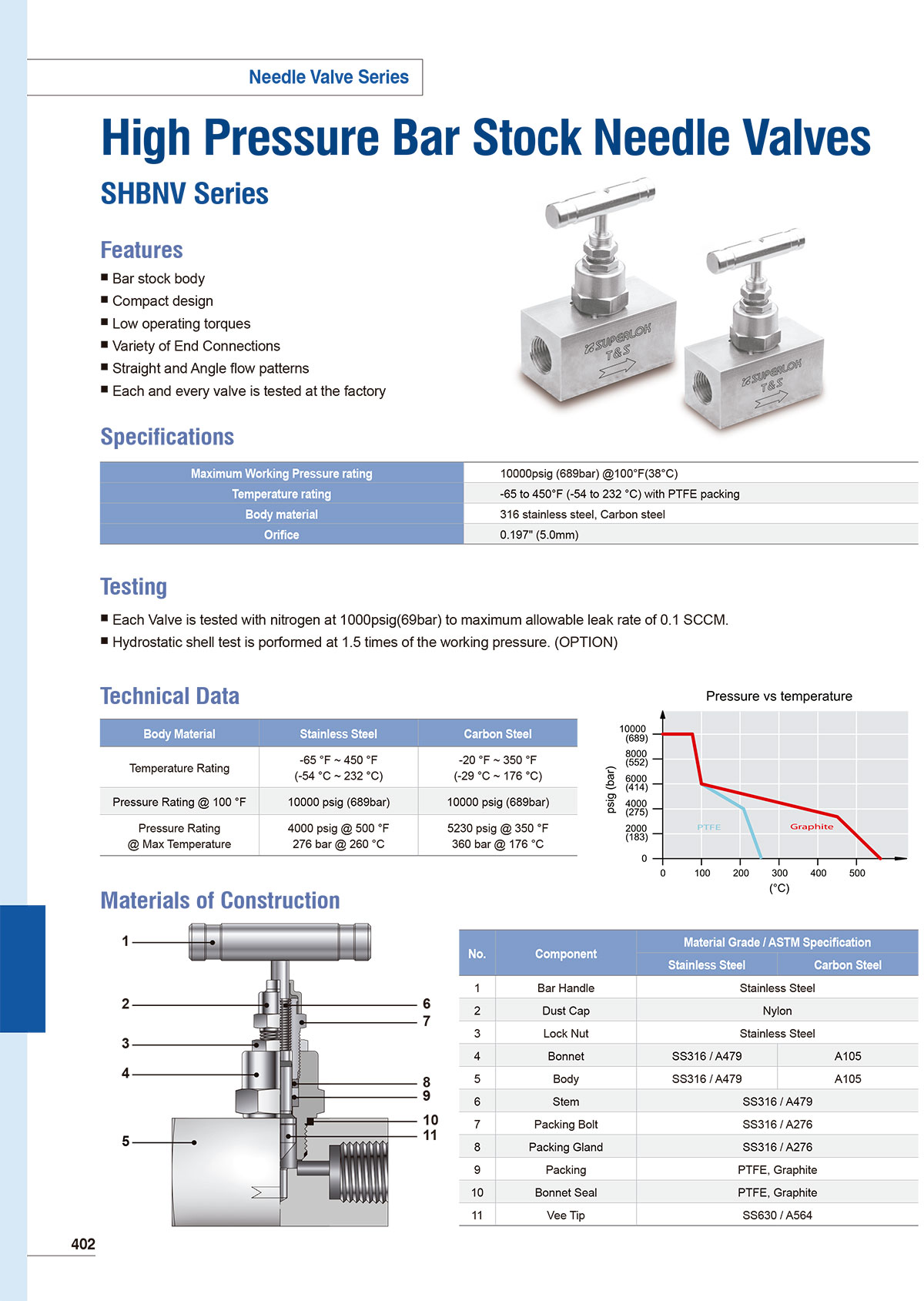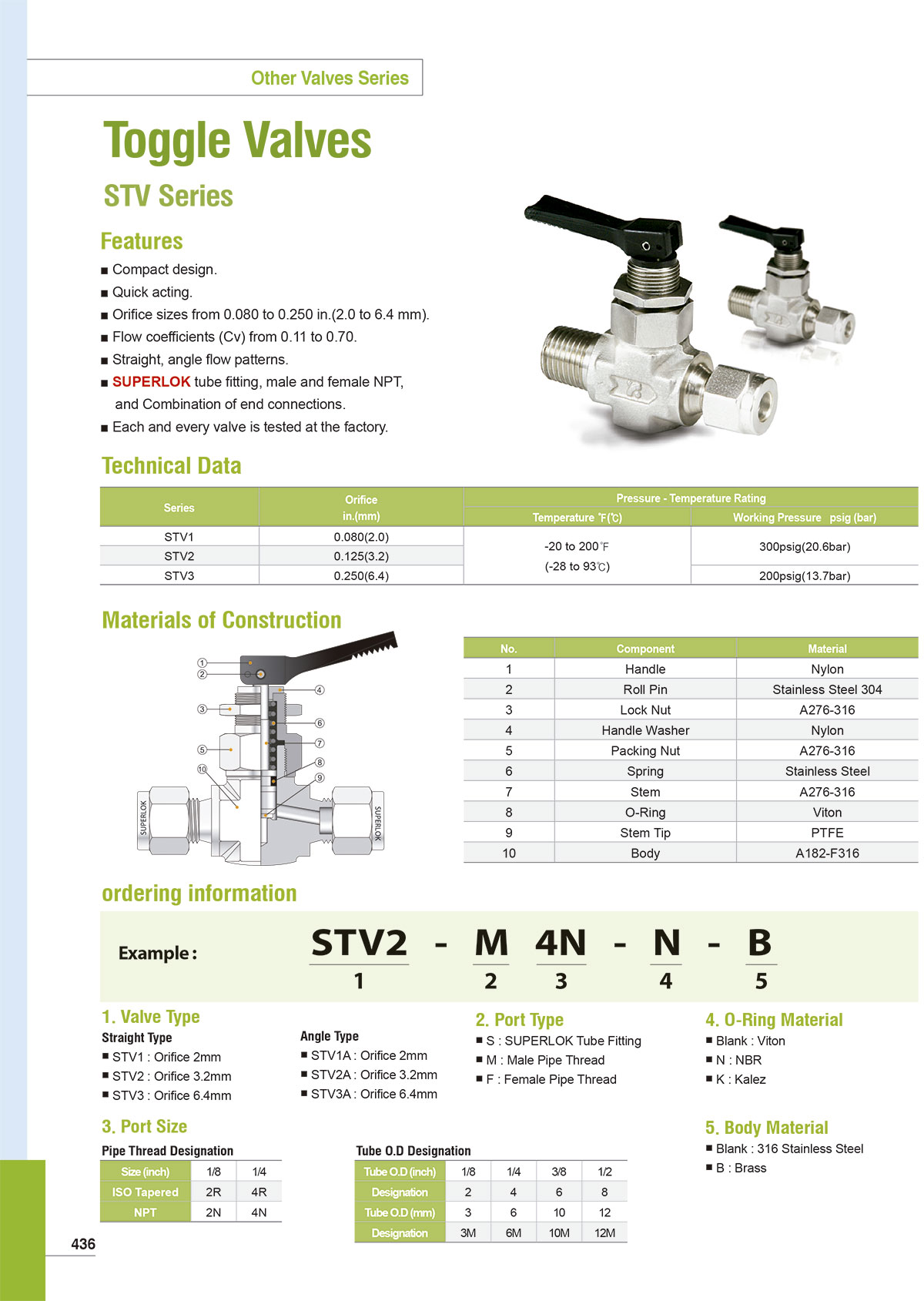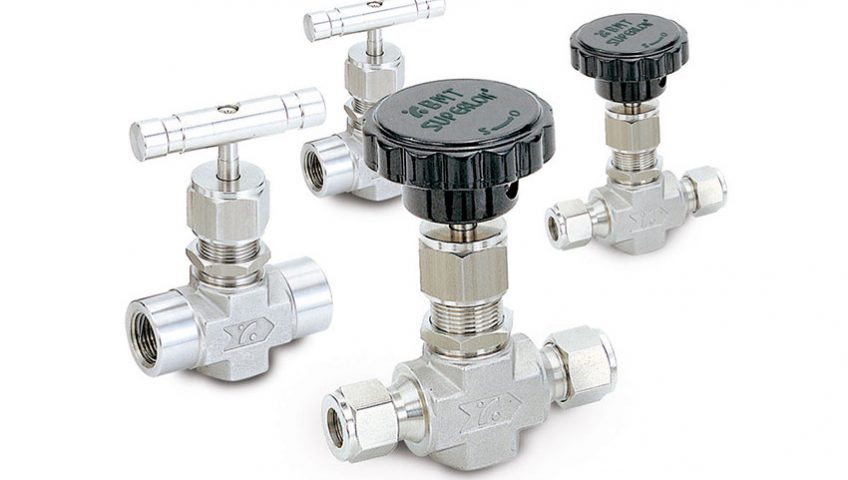
Globe / Needle / Toogle Valves
Globe / Needle / Toogle Valves
An instrument needle valve uses a tapered pin to gradually open a gap for fine flow control. The flow can be controlled and regulated with the use of a spindle. A needle valve has a relatively small hole with a long, tapered seat and a needle-shaped plunger at the end of a screw, which fits exactly into the seat.
As the screw is turned and the plunger retracts, flow between the seat and the plunger is possible; however, until the plunger is fully retracted, fluid flow is significantly impeded. Since the fine-threaded screw requires many turns to retract the plunger, precise flow regulation is possible.
The virtue of the needle valve is the vernier effect of the relationship between the length of the needle and its diameter, or the difference in diameter between the needle and the seat. A long axial travel (the control input) generates a very small and precise radial change (which affects the resulting flow).
Needle valves can also be used in vacuum systems, when precise control of gas flow is required, at low pressure, such as when filling gas-filled vacuum tubes, gas lasers, and similar devices.
To download "catalog" click on the product link, or on the image.
